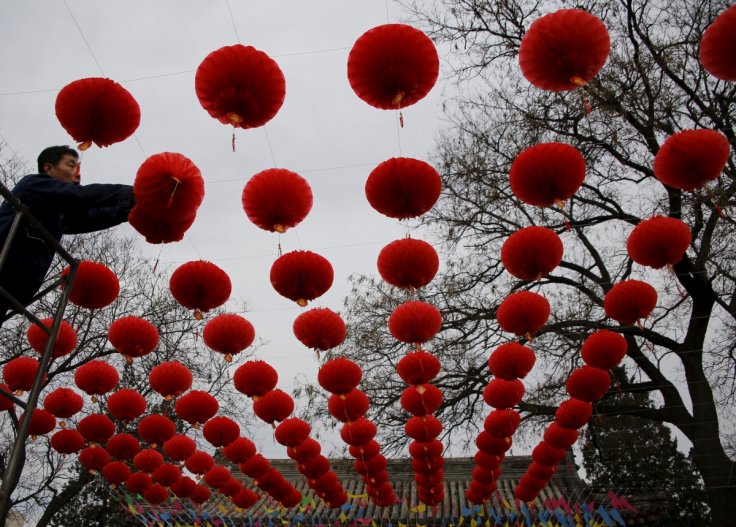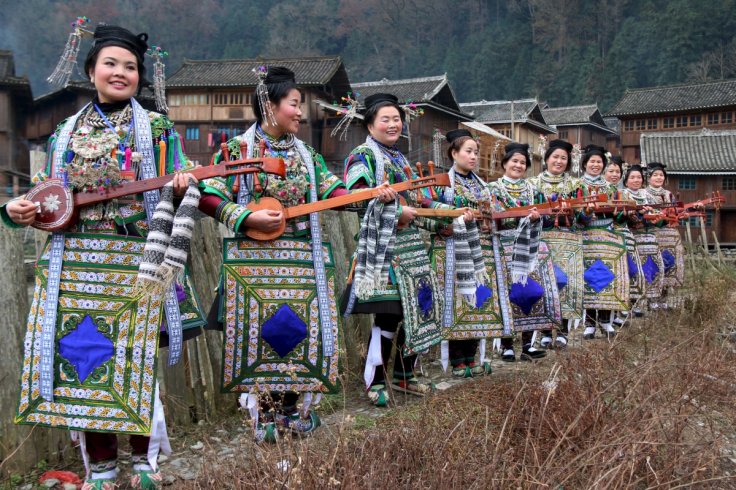
After grueling long-distance travel bedevilled by traffic snarls, rail station congestions and flight delays caused by the unusually snowy weather, the Chinese have come home to ancestral places to celebrate the Lunar New Year.
The month-long travel rush is not just the beginning of the New Year preparations but is in itself stand-out spectacle of the colourful Chinese New Year celebrations.
Here is a look at what the Chinese New year is all about -- the customs and traditions, celebrations and the most important days.
Lunar calendar
Chinese New Year is celebrated on the first day of the Lunar calendar. This year the Chinese New Year falls on 8 February.
The Lunar New Year is the biggest celebration in China and is marked by family reunions, mammoth cross-country travel, lion and dragon dances, offering of sacrifices to ancestors, fireworks and a seven-day long national holiday. Frenzied shopping and frustrating traffic snarls across the country also mark the holiday celebration.



Riot of Red: China is awash in red during the course of the festival as red is considered the country's lucky colour. The fascination with red ranges from red lanterns, red clothes, red- themed home decorations and red envelopes that are offered to children. Giving red envelopes, of course with money inside, symbolises health, wealth, luck and good academics for children in the New Year.
Re-union Dinner: Great pain is taken to make it for the re-union dinner. The opulent cuisine has symbolic meanings as well, such as the dumpling and the traditional sticky rice cake.
Spring Couplets: The couplets are also known as New Year couplets. These are auspicious phrases written in a specific order and ritually pasted up on doors. These paired phrases have seven Chinese characters etched in black ink on a red paper. The calligraphic effort is believed to have powers to ward off evil.
Offerings for Ancestors: The ancient practice of worshipping ancestors and offering sacrifices for them is still prevalent in the country. Sweeping tombs, offering prayers, holding special rituals at temples and homes etc are part of the traditions observed as a mark of respect to the ancestors.
Fireworks: Firecrackers are an integral part of the Chinese New Year festivities. At the stroke of the clock marking the New Year, massive fireworks go off in Chinese cities and even villages.
New Year Bell: The Chinese welcome the New Year by ringing large bells, which are believed to chime in good fortune, wealth and luck. There are bell ringing ceremonies in public squares and temples.
Though the New Year festival is officially a three-day holiday, usually the weekends around the actual day are also added to make it a 7-day festival. However, the most important day of the festival is the New Year's eve, which is marked as the family reunion day. This is followed by the actual beginning of the New Year, February 8.
Usually the preparations for the festival start much earlier, kicking in the festive mood almost three weeks before the New Year. And celebrations traditionally end with the conclusion of the Spring Festival, which is observed on the fifteenth day of the first Chinese month. This year this falls on February 22.
Pre-New Year
Pre-New Year preparations start on January 31, 2016. The Chinese people mark this period by 'sweeping dust off' the passing year, and prepares their homes for the advent of the New Year. The period also sees the Chinese opening their purse strings generously and splurging on gifts, clothes, decorations, sweets etc. Red lanterns are the most ubiquitous New Year decor and the Chinese also buy new year-themed paintings during the season.
New Year's Eve, 7 February 2016
On the New Year's eve people are engrossed in the last minute preparations as their folks from far and wide hit the roads to reach the family homes. People decorate their houses, hang new year paintings, paper cutouts and 'door god images' on their houses. The preparation for the New Year feast is another activity.
New Year, 8 February
The sumptuous New Year feast is also filled with foods that have symbolic value as well -- such as the dumplings which symbolize wealth and prosperity for the northern Chinese.
People spend the day exchanging greetings, offering lucky money to children, getting decked up in new clothes etc. The evenings are marked by customary fireworks. They stay up late, ring the New Year Bell and enjoy themselves of the special New Year programmes on the TV.
And what happens after New Year bash?
There are more celebrations, observances, rituals, customary activities -- and of course even more travel!
First, the Chinese don't sweep their houses for two days after the New Year as they think it will mean the good luck of the New Year will also be swept away. So they sweep the house on the third day.
The day after the New Year is for married daughters to visit their parents. So this means another round of hectic cross-country travel. Even higher numbers of people hit the road between the third and the seventh day after New Year as this is the time for friends and relatives to visit each other.
The Day-8 after the New Year will see people return to their work and business. In Chinese beliefs 8 is the luckiest number and hence they consider it highly auspicious to re-start work and business on the 8th day of the New Year, even though it falls on a Sunday.
The almost month-long celebrations come to a stop with the Chinese Lantern Festival, which is on the 15th day of the New Year, which is 22 February 2016.








